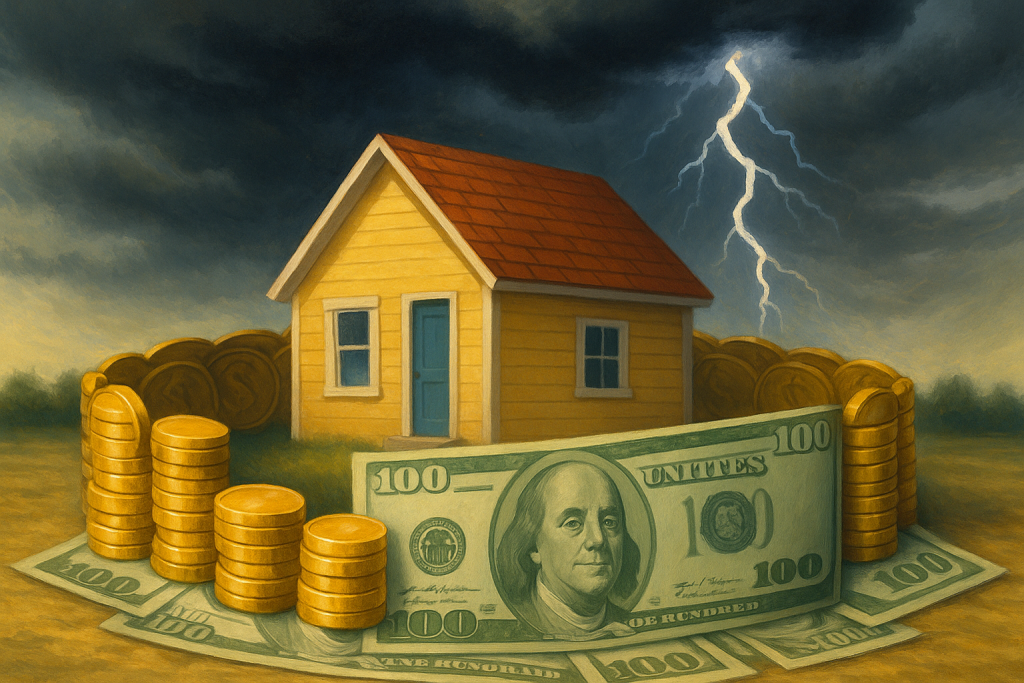Natural disasters can strike without warning, leaving devastation in their wake. Preparing financially for such events is essential to safeguard your financial stability. When unforeseen circumstances occur, having a financial emergency fund dedicated to coping with natural disasters can significantly ease the burden.
In the United States, as climate change increases the frequency and intensity of these events, building a contingency fund should be a priority. This guide will help you understand the importance of creating a financial cushion specifically for emergency situations related to natural phenomena.
Why you need a financial emergency fund

A financial emergency fund is essential because it acts as your financial lifeline when disaster strikes. Unexpected events, such as hurricanes, wildfires, or floods, can disrupt everyday life and lead to unforeseen expenses. Without a dedicated reserve, you might find yourself in a precarious financial situation, forcing you to rely on credit or dip into retirement savings.
To mitigate the impact, it is crucial to recognize the significance of setting aside funds specifically for emergencies. These reserves provide peace of mind and allow for more focused recovery efforts. By understanding the potential financial repercussions of natural disasters, you can proactively prepare and protect your financial future.
Identifying potential costs of natural emergencies
When planning your financial emergency fund, consider the various costs associated with natural disasters. These may include temporary accommodation, travel expenses, food, medical supplies, and repair costs for damaged property. Understanding the scope of these expenses helps in estimating the amount required in your fund.
Insurance deductibles are another important consideration. Review your insurance policies to determine how much you might need to pay out of pocket in the event of a claim. By accounting for these potential costs, you can create a more accurate and effective financial buffer, tailored to your specific needs and risks.
How to establish your emergency fund
Creating a financial buffer for natural disasters involves strategic planning and disciplined saving. Start by setting a realistic goal that aligns with your financial situation. A good rule of thumb is to aim for three to six months’ worth of living expenses. This target ensures you have enough to sustain yourself during recovery.
Next, automate your savings to build your fund steadily over time. Allocate a portion of your income to a separate savings account dedicated solely to emergency preparedness. Regular contributions will soon add up, allowing you to grow your fund without significantly impacting your daily budget.
Practical tips for saving effectively
Effective saving strategies can make building your financial reserve an achievable goal. Begin by cutting unnecessary expenses and redirecting those funds to your emergency account. Consider joining a credit union or online bank that offers high-interest savings accounts to maximize growth.
Utilize tools like budgeting apps or personal finance software to track your progress and maintain accountability. Additionally, take advantage of bonuses, tax refunds, or monetary gifts, directing a portion of them to your emergency fund. Through consistent effort and smart financial decisions, you’ll ensure you’re prepared for the financial impacts of natural disasters.
Final thoughts on financial preparedness
Building a financial emergency fund for natural disasters is a critical component of personal financial planning. By proactively preparing, you can mitigate the economic impact of these unpredictable events and focus on recovery without financial stress.
Remember, the key to success lies in consistency and commitment. Stay disciplined with your savings plan, regularly reassess your needs, and adjust your fund as necessary to accommodate potential changes in your circumstances. By doing so, you’ll be well-equipped to face any natural disaster that comes your way with resilience and confidence.
